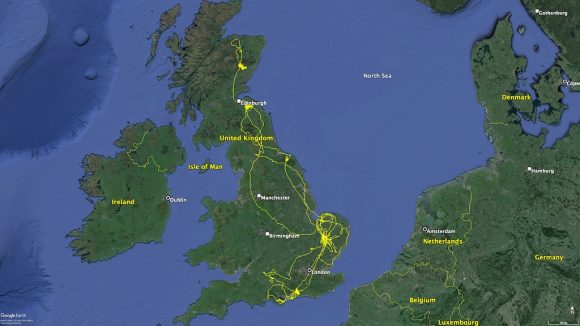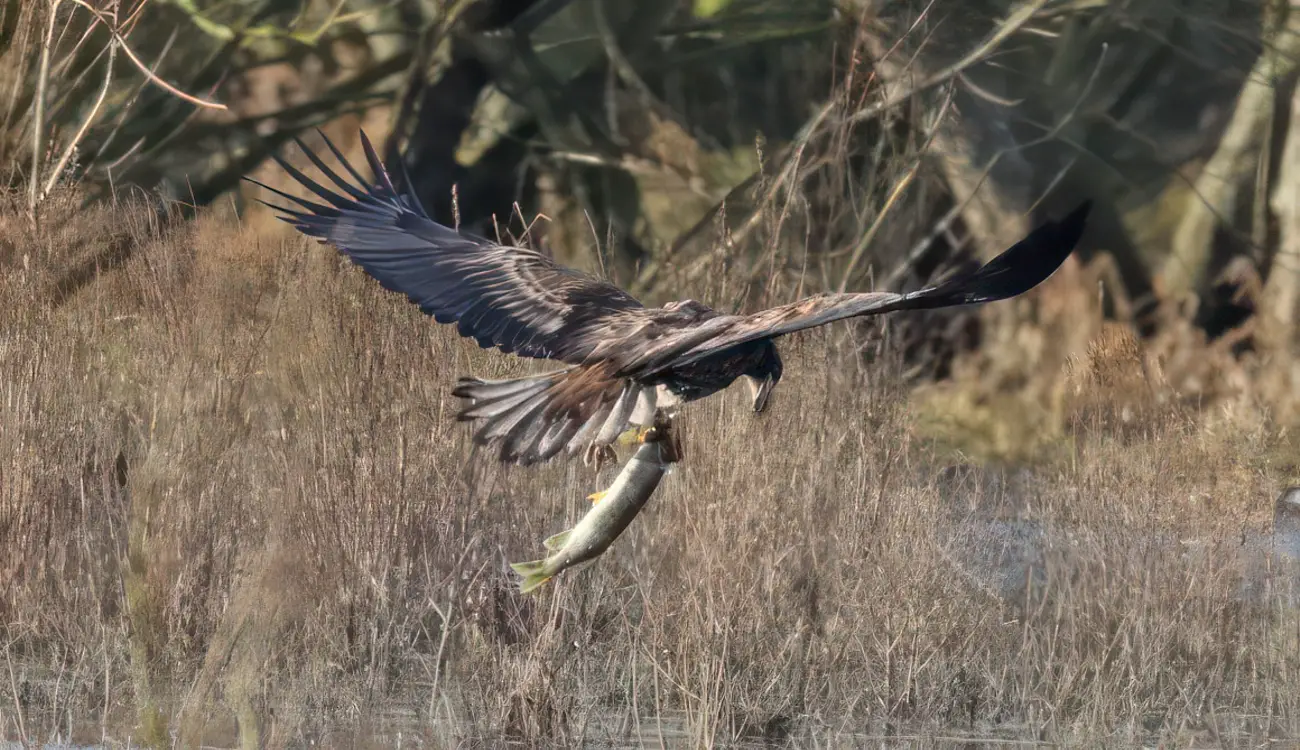The White-tailed Eagle project, a collaborative effort between Forestry England and the Roy Dennis Wildlife Foundation to reintroduce this previously lost species to the South of the UK, has reached its fifth year.
As previously reported, the eagles, particularly in their early years, exhibit highly nomadic behaviour. Some have ventured as far as northern Scotland, while others have crossed the English Channel to continental Europe, returning to the Isle of Wight and the South Coast as they approach breeding age.
First fledgling: G625’s journey
Last year, the project celebrated a significant milestone with the fledging of its first chick, G625, from a wild nest. The young male was satellite tagged, allowing for near real-time tracking of his movements. His behaviour closely mirrors that of other translocated birds.
G625 left his parents’ territory on 6th January, travelling to Wiltshire and then moving north-east to East Anglia in late January. He spent two months in Norfolk and Suffolk, often seen in the company of a colour-ringed Dutch White-tailed Eagle, WN88.
G625 was also observed catching fish at the Mickle Mere Nature Reserve.
Travels to Scotland and back
G625 departed East Anglia on 26th March, flying to the Lammermuir Hills in Scotland over five days, covering 660km. This journey was reminiscent of his father, G471, who had also spent time in East Anglia before moving north to the Southern Uplands. However, G625’s stay was brief, as he returned to East Anglia on 15th April.
After a short return to his natal nest and visits to the Isle of Wight in mid-April, G625 embarked on further travels. He flew 299km back to North Norfolk on 29th April and continued his journey northwards the following day, arriving in the North York Moors after a day’s flight of 234km.
Northward adventures
G625 stayed in the North York Moors for four days before moving further north, passing through Teesside and reaching the Southern Uplands. By 10th May, he crossed the Firth of Forth and continued to the Scottish Highlands, eventually roosting in the Cairngorms.
The young male has since remained in the Cairngorms, exploring areas between Glen Cova and Glen Lethnot in the Angus Glens. It remains to be seen how long he will stay in northern Scotland.

Continued monitoring and future prospects
G625’s movements are closely monitored, providing valuable insights into the behaviour and range of these magnificent birds. The project also tracks other translocated eagles, such as G641 from the Isle of Lewis, who has been in the Cairngorms since May.
The satellite tags offer high-resolution data, recording GPS locations every five minutes. This detailed tracking allows the team to report on the fascinating journeys of these eagles and their continued adaptation to their environments.
Find out more
Find out more by visiting the Roy Dennis Wildlife Foundation website, or the Forestry England website.
Our thanks to Trevor Goodfellow for use of the photo of G625 with a pike at Mickle Mere in Suffolk.





